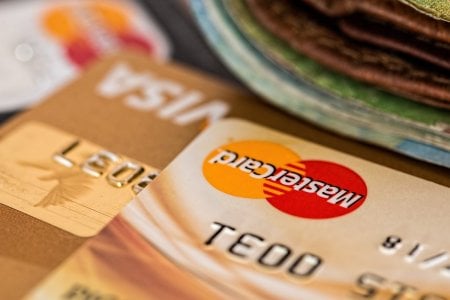How $370,000 was stolen from Melbourne couple: ‘It was a nightmare’
Picture this: Your bags are packed, your tickets booked, and you're just about to set off on a long-awaited family holiday when a phone call from your bank shatters your peace.
The beginning of an overseas adventure suddenly became a real-life horror story for John and Julie from Melbourne. Their devastating experience illuminates the alarming increase in identity theft cases in Australia.
As they were getting ready for their next great adventure in May, Bankfirst called the pairabout suspicious activity in one of their accounts. They then noticed that his phone was on ‘SOS’ mode.
It turned out they were experiencing a phenomenon known as 'porting', meaning someone had gained control of John's mobile number and transferred it to another device.
The couple reacted promptly. They contacted their banks, credit card providers, and telco–which included the names of Westpac, ANZ, Macquarie, Qantas Travel Money, and Woolworths Mobile to inform them of the situation. Confident that they had safeguarded themselves, they departed for their overseas trip the following day.
Yet, little did they know, the horror had only just begun. While abroad, they noticed some money had been missing from their accounts.
They eventually got ahold of the banks, who instructed them to go to a branch to confirm their identity. This was not possible, of course, as they were overseas. Due to this, they could not access their accounts, and they were not aware of the extent of their financial loss.
The couple continued their holiday after reassurances from their family. ‘We probably would have come home if we weren't meeting our family–it was a trip we had planned for years to meet all their kids and their partners,’ Julie said.
Upon their return home in early July, they were confronted with the stark reality that fraudsters had stolen a staggering $370,000 from their accounts, sold shares worth $45,000, and created a whopping 20 credit and debit accounts under their names.
The crafty scammers didn't just stop there. The fraudsters had ported the couple's phones and accessed John's email account, messaging friends, family, and work clients to lure others into their web of deception.
Turning to their banks, they were met with apprehension in place of assistance.'They made us feel like we were the criminals,' remarked John.
‘It was a nightmare,’ Julie said. ‘You couldn't get through to anybody, we were on hold for hours on end.’
As of writing, Bankfirst and Commonwealth Bank have returned the couple’s money. Some banks like Macquarie Bank and CMC Markets have also agreed to reimburse the lost funds. Other banks, however, are still investigating the incident.
This unsettling experience reveals how the system can fail those who are the victims of such heinous acts. Their mental health took a severe dip.
As Julie summarised, 'I've never in my life had anxiety, but ever since, I feel like I've been living in this hyper-vigilant state. You just think there's no hope of getting out of this.’
Although the semi-retired couple, who wished to keep their surname private, were aware they had been part of the Medibank and Latitude data breaches, they remained unsure how the perpetrators got their licence and passport details.
Cassandra Cross, a Queensland University of Technology Associate Professor, said that the cybercriminal could have gotten bits of information from data breaches and social media to break into an online account.
‘Australians have been targeted by a number of significant data breaches in recent times,’ she shared.
‘If we think about the type of personal information a motivated offender could piece together, fairly quickly they could have a holistic account of a person's identity.’

Prof Cross pointed out that this hair-raising incident brings to light some pressing issues that need immediate attention, such as the ability for cybercriminals to open multiple online accounts without detecting the true identity of the account holder and how phone porting can turn off the effectiveness of two-factor authentication.
The incident has also emphasised the need for some significant changes. Consumer Action Law Centre's chief executive, Stephanie Tonkin, has highlighted the need to impose tighter bank regulations. They should be compelled to detect and effectively respond to identity thefts and the frauds and scams that inevitably follow.
She mentions that laws passed in the UK require banks to reimburse scam victims' money. The country’s largest banks are also set for a parliamentary inquiry on what they could be doing more for Aussies who’ve been victimised by scammers.
‘Given the incredible sophistication and proliferation of scams and fraud in Australia, we can't expect individuals to protect themselves–there's no indication of what went wrong,’ Tonkin pointed out.
‘Banks are the only ones in the position to detect and protect customers from scams and fraud.’
John and Julie’s saddening case also exposes another regulatory loophone: it is unknown which agency would have oversight over identity theft cases stemming from data breaches.
According to Minister for Finance Katy Gallagher and Minister for Cyber Security Clare O'Neil, the federal government’s National Strategy for Identity Resilience–announced in late June–can help address this problem.
Their press release said, ‘The initiatives within the strategy will help to address gaps and long-standing barriers to achieving identity resilience nationally, including improved responses to large data breaches.’
The Australian Competition and Consumer Commission (ACCC) earlier defined a scam as 'when someone deceives you into providing personal or financial information so they can steal from you'. However, with the increasing cases of identity theft, the definition may soon need to include scams that have grown from data breaches.

At the SDC, our sympathy goes out to John and Julie, who endured this unnerving experience. And we hope this tale raises awareness about the potential dangers lurking behind seemingly harmless smartphone screens. Stay safe, folks, and be careful where you click!
What do you think of this story, dear members? Share your thoughts in the comments below!
The beginning of an overseas adventure suddenly became a real-life horror story for John and Julie from Melbourne. Their devastating experience illuminates the alarming increase in identity theft cases in Australia.
It turned out they were experiencing a phenomenon known as 'porting', meaning someone had gained control of John's mobile number and transferred it to another device.
The couple reacted promptly. They contacted their banks, credit card providers, and telco–which included the names of Westpac, ANZ, Macquarie, Qantas Travel Money, and Woolworths Mobile to inform them of the situation. Confident that they had safeguarded themselves, they departed for their overseas trip the following day.
Yet, little did they know, the horror had only just begun. While abroad, they noticed some money had been missing from their accounts.
The couple continued their holiday after reassurances from their family. ‘We probably would have come home if we weren't meeting our family–it was a trip we had planned for years to meet all their kids and their partners,’ Julie said.
Upon their return home in early July, they were confronted with the stark reality that fraudsters had stolen a staggering $370,000 from their accounts, sold shares worth $45,000, and created a whopping 20 credit and debit accounts under their names.
Turning to their banks, they were met with apprehension in place of assistance.'They made us feel like we were the criminals,' remarked John.
‘It was a nightmare,’ Julie said. ‘You couldn't get through to anybody, we were on hold for hours on end.’
As of writing, Bankfirst and Commonwealth Bank have returned the couple’s money. Some banks like Macquarie Bank and CMC Markets have also agreed to reimburse the lost funds. Other banks, however, are still investigating the incident.
This unsettling experience reveals how the system can fail those who are the victims of such heinous acts. Their mental health took a severe dip.
As Julie summarised, 'I've never in my life had anxiety, but ever since, I feel like I've been living in this hyper-vigilant state. You just think there's no hope of getting out of this.’
Although the semi-retired couple, who wished to keep their surname private, were aware they had been part of the Medibank and Latitude data breaches, they remained unsure how the perpetrators got their licence and passport details.
‘Australians have been targeted by a number of significant data breaches in recent times,’ she shared.
‘If we think about the type of personal information a motivated offender could piece together, fairly quickly they could have a holistic account of a person's identity.’

Scammers could piece together a person’s identity through information from data breaches and social media. Credit: Towfiqu barbhuiya/Unsplash
The incident has also emphasised the need for some significant changes. Consumer Action Law Centre's chief executive, Stephanie Tonkin, has highlighted the need to impose tighter bank regulations. They should be compelled to detect and effectively respond to identity thefts and the frauds and scams that inevitably follow.
She mentions that laws passed in the UK require banks to reimburse scam victims' money. The country’s largest banks are also set for a parliamentary inquiry on what they could be doing more for Aussies who’ve been victimised by scammers.
‘Given the incredible sophistication and proliferation of scams and fraud in Australia, we can't expect individuals to protect themselves–there's no indication of what went wrong,’ Tonkin pointed out.
‘Banks are the only ones in the position to detect and protect customers from scams and fraud.’
John and Julie’s saddening case also exposes another regulatory loophone: it is unknown which agency would have oversight over identity theft cases stemming from data breaches.
According to Minister for Finance Katy Gallagher and Minister for Cyber Security Clare O'Neil, the federal government’s National Strategy for Identity Resilience–announced in late June–can help address this problem.
Their press release said, ‘The initiatives within the strategy will help to address gaps and long-standing barriers to achieving identity resilience nationally, including improved responses to large data breaches.’
The Australian Competition and Consumer Commission (ACCC) earlier defined a scam as 'when someone deceives you into providing personal or financial information so they can steal from you'. However, with the increasing cases of identity theft, the definition may soon need to include scams that have grown from data breaches.
Key Takeaways
- A Melbourne-based couple named John and Julie fell victim to a sophisticated identity theft scheme, losing $370,000 to fraudsters.
- The couple discovered fraudulent activities in their bank accounts while overseas. Despite notifying their banks, credit card providers, and telcos, the fraudsters managed to drain their accounts and sell off their shares.
- They said the customer service they received from their banks was disappointing, making them feel like criminals. Efforts to rectify the situation were very stressful and frustrating, which affected their mental health.
- Cassandra Cross, a Queensland University of Technology Associate Professor, believes the cybercriminals could have gotten bits of information from data breaches and social media to break into an online account.
- Consumer Action Law Centre Chief Executive Stephanie Tonkin advocates for regulations compelling banks to better detect and respond to identity theft resulting from fraud and scams.
At the SDC, our sympathy goes out to John and Julie, who endured this unnerving experience. And we hope this tale raises awareness about the potential dangers lurking behind seemingly harmless smartphone screens. Stay safe, folks, and be careful where you click!
What do you think of this story, dear members? Share your thoughts in the comments below!








